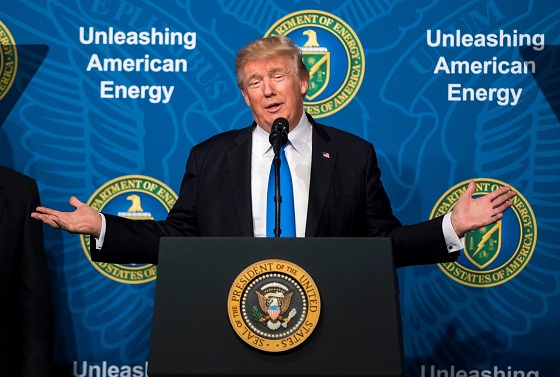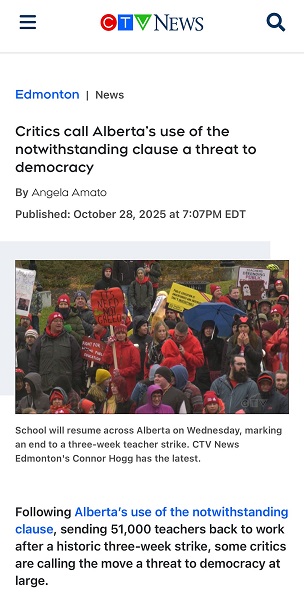Brownstone Institute
Study Confirms the Truth about Masks and Children

From the Brownstone Insitute
By
It’s late 2024, and masking has managed to remain a contentious issue. Years of misinformation from supposed “experts” like Anthony Fauci and Deborah Birx and organizations like the CDC have convinced millions of Very Smart People to believe that masks are an effective tool to reduce the transmission of respiratory viruses. This applies also to the flu, despite those same experts and organizations somehow neglecting to recommend masks for the decades of flu seasons pre-2020.
Forcing anyone to mask, given the substantial and robust evidence base showing conclusively that masks don’t work, was an indefensible policy decision. But specifically forcing children to mask was decidedly much, much worse.
And not just because it was a pointless exercise in pandemic theater, with zero evidence of efficacy.
But because it was actively causing harm too, as a new study shows.
New Study Confirms Harms of Masking Children
A new study co-authored by Tracy Beth Høeg delves into the side effects of masking, a subject completely ignored by experts and politicians desperate to exert control over individual behavior.
And in their discussion, it’s immediately obvious why their research and conclusions will be completely ignored by the mainstream media.
“There is a lack of robust evidence of benefit from masking children to reduce transmission of SARS-CoV-2 or other respiratory viruses,” they explain. Couldn’t have said it better myself.
The highest quality evidence available for masking children for COVID-19 or other viral respiratory infections has failed to find a beneficial impact against transmission. Mechanistic studies showing reduced viral transmission from use of face masks and respirators have not translated to real world effectiveness. Identified harms of masking include negative effects on communication and components of speech and language, ability to learn and comprehend, emotional and trust development, physical discomfort, and reduction in time and intensity of exercise.
It’s a masterpiece. No notes.
As the Cochrane Library review explained, as the data shows, as decades of accumulated evidence confirmed: Masks Don’t Work. For anyone, but especially for children, who could not wear or use masks properly, even if they were shown to have worked. Which they did not.
Experts demanded and politicians mandated that they wear them anyway, based on speculation, hope, and mechanistic studies that were conclusively disproven. And the harms were remarkable.
“Negative effects on communication and components of speech and language.” “Ability to learn and comprehend.” “Emotional and trust development, physical discomfort, and reduction in time and intensity of exercise.”
Just, you know, the basic building blocks of human development that children need to grow as well-adjusted, physically and mentally healthy teenagers and adults.
As Høeg and the other authors explain, this necessarily means that forcing children to mask fails any objective standard of harms and benefits.
Effectiveness of child masking has not been demonstrated, while documented harms of masking in children are diverse and non-negligible and should prompt careful reflection. Recommendations for masking children fail basic harm-benefit analyses.
Their next section is a complete dismantling of the CDC and the US public health bureaucracy, how they handled Covid, and how poor an example this sets for future pandemics.
In many locations in North America, children as young as two years of age were required to wear face masks daily for multiple consecutive hours, both indoors and outdoors, in school and childcare settings [1], [2]. This stood in stark contrast to European countries where masking was never recommended for children under the age of six and, in many countries, never under age twelve [3]. The United States Centers for Disease Control and Prevention (CDC)’s child masking recommendations deviated substantially from international guidelines [3], [4], [5]. The CDC continues to recommend masks for children down to age two in certain settings [1], [6], and this is in the absence of strategies for exiting these restrictions. In the event of a future public health threat, clear and consistent communication from public health officials about the criteria that will be used to withdraw temporary public health recommendations while data are gathered could serve to ease public anxiety, lessen distrust, and facilitate a return to a more normal life wherein ineffective recommendations are promptly discarded.
It’s a calm, thorough demolition of the incompetence and authoritarianism of the US public health establishment.
They repeat that there is no evidence to support masking children and explain that there is no real-world evidence showing the effectiveness of child mask mandates, with zero randomized controlled trials conducted to determine whether masking kids would prevent the spread of Covid. It’s inexcusable to mandate a policy with no evidence, but even worse considering the demonstrable harms.
“Speech, language, and learning: Humans rely on visual information provided by a speaker’s face to decode speech. Seeing mouth movements and facial gestures accelerates recognition of words and enhances speech comprehension [12], [19], [20], [21]. The integration of audio and facial information is crucial to speech perception and development. Visually impaired children often have delays in speech and language development [22], which may be due, at least in part, to reduced ability to perceive,” they write.
Masks prevent children from learning, from seeing mouth movements to facial gestures. They fundamentally detract from a child’s ability to develop speech and language. Among many other problems covered in the full study.
These harms were well-known before Covid. This isn’t new information, and it’s obvious common sense. So why did public health authorities ignore it, in favor of promoting evidence-free policies and mandates?
There are few reasonable explanations: panic, fear, or incompetence. Likely some combination of all three.
Forcing their absurd, fatalistic, hyper-safetyism on adults was and is one thing. Imposing it on children is another. And their refusal to admit they were wrong meant the growth and development of kids were most certainly harmed and stunted for years, while ensuring that there would be terrified, misinformed parents who would continue to force their kids to wear masks indefinitely.
When you consider those consequences, rationality fades, and a disturbing likelihood of malicious intent becomes a lot more realistic.
Republished from the author’s Substack
Brownstone Institute
Bizarre Decisions about Nicotine Pouches Lead to the Wrong Products on Shelves

From the Brownstone Institute
A walk through a dozen convenience stores in Montgomery County, Pennsylvania, says a lot about how US nicotine policy actually works. Only about one in eight nicotine-pouch products for sale is legal. The rest are unauthorized—but they’re not all the same. Some are brightly branded, with uncertain ingredients, not approved by any Western regulator, and clearly aimed at impulse buyers. Others—like Sweden’s NOAT—are the opposite: muted, well-made, adult-oriented, and already approved for sale in Europe.
Yet in the United States, NOAT has been told to stop selling. In September 2025, the Food and Drug Administration (FDA) issued the company a warning letter for offering nicotine pouches without marketing authorization. That might make sense if the products were dangerous, but they appear to be among the safest on the market: mild flavors, low nicotine levels, and recyclable paper packaging. In Europe, regulators consider them acceptable. In America, they’re banned. The decision looks, at best, strange—and possibly arbitrary.
What the Market Shows
My October 2025 audit was straightforward. I visited twelve stores and recorded every distinct pouch product visible for sale at the counter. If the item matched one of the twenty ZYN products that the FDA authorized in January, it was counted as legal. Everything else was counted as illegal.
Two of the stores told me they had recently received FDA letters and had already removed most illegal stock. The other ten stores were still dominated by unauthorized products—more than 93 percent of what was on display. Across all twelve locations, about 12 percent of products were legal ZYN, and about 88 percent were not.
The illegal share wasn’t uniform. Many of the unauthorized products were clearly high-nicotine imports with flashy names like Loop, Velo, and Zimo. These products may be fine, but some are probably high in contaminants, and a few often with very high nicotine levels. Others were subdued, plainly meant for adult users. NOAT was a good example of that second group: simple packaging, oat-based filler, restrained flavoring, and branding that makes no effort to look “cool.” It’s the kind of product any regulator serious about harm reduction would welcome.
Enforcement Works
To the FDA’s credit, enforcement does make a difference. The two stores that received official letters quickly pulled their illegal stock. That mirrors the agency’s broader efforts this year: new import alerts to detain unauthorized tobacco products at the border (see also Import Alert 98-06), and hundreds of warning letters to retailers, importers, and distributors.
But effective enforcement can’t solve a supply problem. The list of legal nicotine-pouch products is still extremely short—only a narrow range of ZYN items. Adults who want more variety, or stores that want to meet that demand, inevitably turn to gray-market suppliers. The more limited the legal catalog, the more the illegal market thrives.
Why the NOAT Decision Appears Bizarre
The FDA’s own actions make the situation hard to explain. In January 2025, it authorized twenty ZYN products after finding that they contained far fewer harmful chemicals than cigarettes and could help adult smokers switch. That was progress. But nine months later, the FDA has approved nothing else—while sending a warning letter to NOAT, arguably the least youth-oriented pouch line in the world.
The outcome is bad for legal sellers and public health. ZYN is legal; a handful of clearly risky, high-nicotine imports continue to circulate; and a mild, adult-market brand that meets European safety and labeling rules is banned. Officially, NOAT’s problem is procedural—it lacks a marketing order. But in practical terms, the FDA is punishing the very design choices it claims to value: simplicity, low appeal to minors, and clean ingredients.
This approach also ignores the differences in actual risk. Studies consistently show that nicotine pouches have far fewer toxins than cigarettes and far less variability than many vapes. The biggest pouch concerns are uneven nicotine levels and occasional traces of tobacco-specific nitrosamines, depending on manufacturing quality. The serious contamination issues—heavy metals and inconsistent dosage—belong mostly to disposable vapes, particularly the flood of unregulated imports from China. Treating all “unauthorized” products as equally bad blurs those distinctions and undermines proportional enforcement.
A Better Balance: Enforce Upstream, Widen the Legal Path
My small Montgomery County survey suggests a simple formula for improvement.
First, keep enforcement targeted and focused on suppliers, not just clerks. Warning letters clearly change behavior at the store level, but the biggest impact will come from auditing distributors and importers, and stopping bad shipments before they reach retail shelves.
Second, make compliance easy. A single-page list of authorized nicotine-pouch products—currently the twenty approved ZYN items—should be posted in every store and attached to distributor invoices. Point-of-sale systems can block barcodes for anything not on the list, and retailers could affirm, once a year, that they stock only approved items.
Third, widen the legal lane. The FDA launched a pilot program in September 2025 to speed review of new pouch applications. That program should spell out exactly what evidence is needed—chemical data, toxicology, nicotine release rates, and behavioral studies—and make timely decisions. If products like NOAT meet those standards, they should be authorized quickly. Legal competition among adult-oriented brands will crowd out the sketchy imports far faster than enforcement alone.
The Bottom Line
Enforcement matters, and the data show it works—where it happens. But the legal market is too narrow to protect consumers or encourage innovation. The current regime leaves a few ZYN products as lonely legal islands in a sea of gray-market pouches that range from sensible to reckless.
The FDA’s treatment of NOAT stands out as a case study in inconsistency: a quiet, adult-focused brand approved in Europe yet effectively banned in the US, while flashier and riskier options continue to slip through. That’s not a public-health victory; it’s a missed opportunity.
If the goal is to help adult smokers move to lower-risk products while keeping youth use low, the path forward is clear: enforce smartly, make compliance easy, and give good products a fair shot. Right now, we’re doing the first part well—but failing at the second and third. It’s time to fix that.
Addictions
The War on Commonsense Nicotine Regulation

From the Brownstone Institute
Cigarettes kill nearly half a million Americans each year. Everyone knows it, including the Food and Drug Administration. Yet while the most lethal nicotine product remains on sale in every gas station, the FDA continues to block or delay far safer alternatives.
Nicotine pouches—small, smokeless packets tucked under the lip—deliver nicotine without burning tobacco. They eliminate the tar, carbon monoxide, and carcinogens that make cigarettes so deadly. The logic of harm reduction couldn’t be clearer: if smokers can get nicotine without smoke, millions of lives could be saved.
Sweden has already proven the point. Through widespread use of snus and nicotine pouches, the country has cut daily smoking to about 5 percent, the lowest rate in Europe. Lung-cancer deaths are less than half the continental average. This “Swedish Experience” shows that when adults are given safer options, they switch voluntarily—no prohibition required.
In the United States, however, the FDA’s tobacco division has turned this logic on its head. Since Congress gave it sweeping authority in 2009, the agency has demanded that every new product undergo a Premarket Tobacco Product Application, or PMTA, proving it is “appropriate for the protection of public health.” That sounds reasonable until you see how the process works.
Manufacturers must spend millions on speculative modeling about how their products might affect every segment of society—smokers, nonsmokers, youth, and future generations—before they can even reach the market. Unsurprisingly, almost all PMTAs have been denied or shelved. Reduced-risk products sit in limbo while Marlboros and Newports remain untouched.
Only this January did the agency relent slightly, authorizing 20 ZYN nicotine-pouch products made by Swedish Match, now owned by Philip Morris. The FDA admitted the obvious: “The data show that these specific products are appropriate for the protection of public health.” The toxic-chemical levels were far lower than in cigarettes, and adult smokers were more likely to switch than teens were to start.
The decision should have been a turning point. Instead, it exposed the double standard. Other pouch makers—especially smaller firms from Sweden and the US, such as NOAT—remain locked out of the legal market even when their products meet the same technical standards.
The FDA’s inaction has created a black market dominated by unregulated imports, many from China. According to my own research, roughly 85 percent of pouches now sold in convenience stores are technically illegal.
The agency claims that this heavy-handed approach protects kids. But youth pouch use in the US remains very low—about 1.5 percent of high-school students according to the latest National Youth Tobacco Survey—while nearly 30 million American adults still smoke. Denying safer products to millions of addicted adults because a tiny fraction of teens might experiment is the opposite of public-health logic.
There’s a better path. The FDA should base its decisions on science, not fear. If a product dramatically reduces exposure to harmful chemicals, meets strict packaging and marketing standards, and enforces Tobacco 21 age verification, it should be allowed on the market. Population-level effects can be monitored afterward through real-world data on switching and youth use. That’s how drug and vaccine regulation already works.
Sweden’s evidence shows the results of a pragmatic approach: a near-smoke-free society achieved through consumer choice, not coercion. The FDA’s own approval of ZYN proves that such products can meet its legal standard for protecting public health. The next step is consistency—apply the same rules to everyone.
Combustion, not nicotine, is the killer. Until the FDA acts on that simple truth, it will keep protecting the cigarette industry it was supposed to regulate.
-

 Censorship Industrial Complex2 days ago
Censorship Industrial Complex2 days agoHow the UK and Canada Are Leading the West’s Descent into Digital Authoritarianism
-

 Business2 days ago
Business2 days agoCapital Flight Signals No Confidence In Carney’s Agenda
-

 International2 days ago
International2 days agoThe capital of capitalism elects a socialist mayor
-

 Justice1 day ago
Justice1 day agoCarney government lets Supreme Court decision stand despite outrage over child porn ruling
-

 Daily Caller1 day ago
Daily Caller1 day agoUS Eating Canada’s Lunch While Liberals Stall – Trump Admin Announces Record-Shattering Energy Report
-

 Business1 day ago
Business1 day agoCarney’s budget spares tax status of Canadian churches, pro-life groups after backlash
-

 COVID-191 day ago
COVID-191 day agoFreedom Convoy leader Tamara Lich to appeal her recent conviction
-

 Daily Caller23 hours ago
Daily Caller23 hours agoUN Chief Rages Against Dying Of Climate Alarm Light















